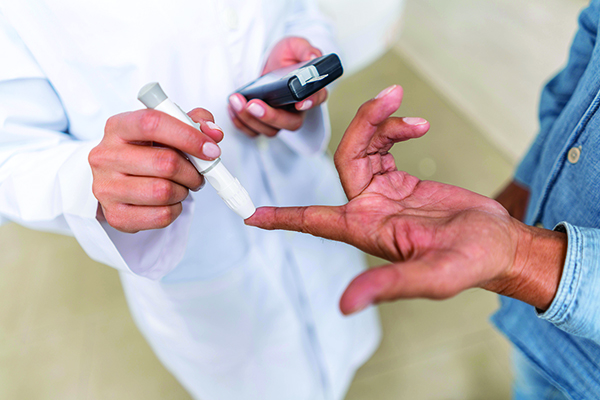Find out if you’re at risk for prediabetes or diabetes


More than 133 million people in the U.S., have diabetes or prediabetes. Of those adults, one in five did not even know they had the condition.
Diabetes is a chronic medical condition, characterized by high levels of glucose (sugar) in the blood, and can cause a heart attack, stroke, blindness, kidney failure, or loss of feet or legs. Prediabetes, on the other hand, is when blood sugar levels are higher than normal, but not quite at the diabetes level yet.
If prediabetes isn’t caught early or managed properly, it can progress into Type 2 diabetes. Therefore, people need to understand the risks of, and be screened for, prediabetes and diabetes.
Diabetes risk factors include the following:
• Being overweight
• Having a parent or sibling who has Type 2 diabetes
• Lack of physical activity (fewer than three times, per week)
• Some ethnic groups are at a higher risk for Type 2 diabetes The good news is, that Type 2 diabetes can be delayed or prevented in people with prediabetes, or diabetes risk factors, through effective lifestyle programs. Modest lifestyle modifications, such as dietary changes and increased physical activity, can decrease the likelihood of developing Type 2 diabetes.
The following is a checklist of recommendations to help reduce the risk of diabetes or prediabetes: • Increase physical activity. Before jumping into a rigorous exercise routine, talk to a doctor about what physical activities are most beneficial for the body. Start slowly to avoid injury and work the way up to 30 minutes of exercise, five days, per week. Things like walking, swimming and dancing, could help keep blood sugar from spiking.
• Choose foods wisely. Carbohydrates like bread, grains, starches, milk and fruits, have the biggest effect on blood sugars. Focus heavily on controlling portion sizes of those foods and balance them with foods like vegetables, lean proteins and heart healthy fats. A registered dietitian can help customize a meal plan.
• Check blood sugar regularly. Keep an eye on what is eaten and how it affects the body, by testing blood sugar. Between 80-130 mg/dl before eating and under 180 mg/dl about two hours after eating is ideal. But everyone is different, so talk to a doctor about what range is best.
• Get in the know. Talk to a certified diabetes educator to learn how to self-manage Type 2 diabetes, including ongoing treatment. Diabetes educators provide information about how exercise and food choices affect blood sugar, and preventing things like eye or kidney damage.
• Check in with a doctor regularly. Treatment needs to change depending on blood sugar levels. Make appointments for regular checkups with a doctor.
Making small, sustainable lifestyle changes can have a significant impact on reducing the risk of developing diabetes, and improving overall health and well-being.


